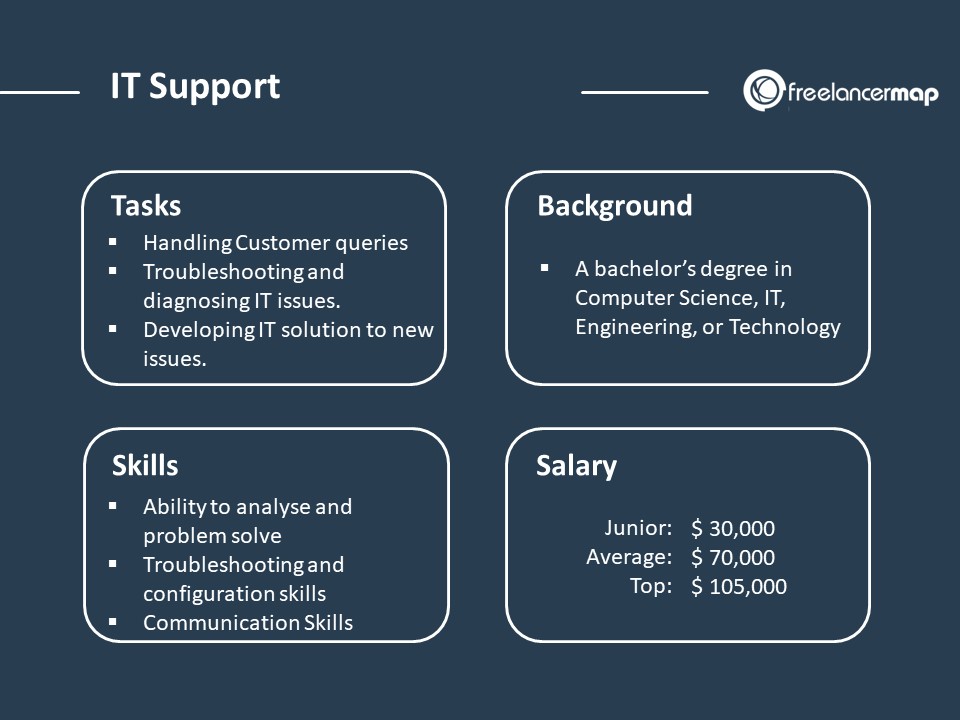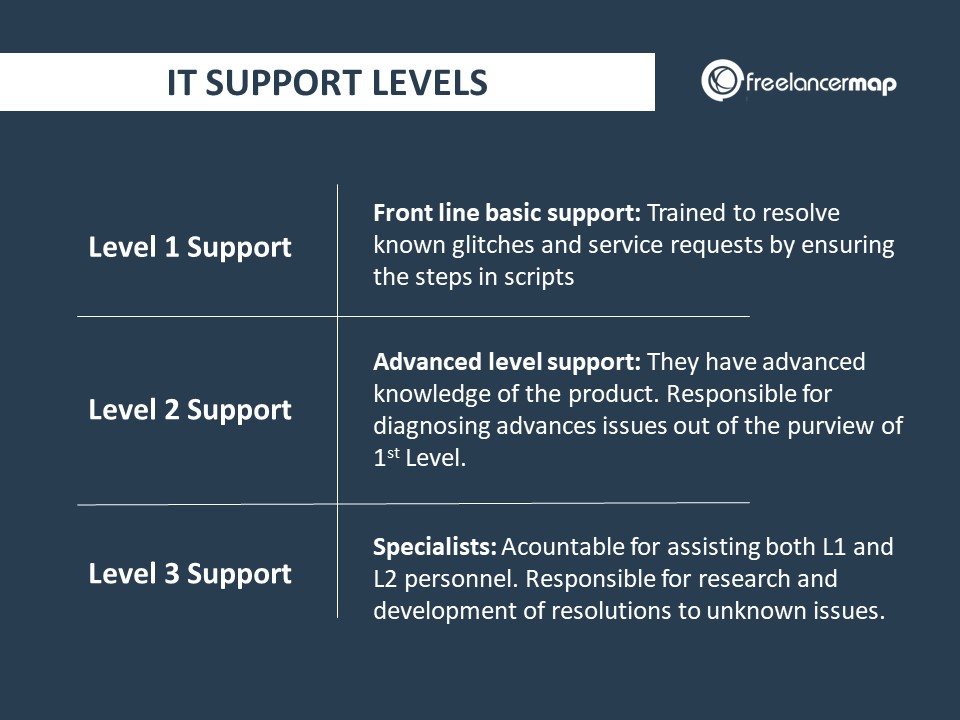An IT support technician is in charge of resolving technical issues on an enterprise and support clients via different channels. They play a very important role in an organization and often work on 3 different levels – Level 1, Level 2 and Level 3. Let’s take a closer look at the role of IT support.
What does an IT Support technician do?


IT Support (also known as Tech support or technical support) refers to the infrastructure of technicians, helpdesk agents, support specialists and tools in place to offer help and support to customers in the IT industry. The IT support serves to solve hardware or software problems and makes use of tools such as ticket systems, online chat, or call centers.
In general, an IT support technician is given the responsibility of helping customers understand how to use or resolve a problem that the customer is dealing with.
They help with specific problems with the IT products and services offered by the company they work for. This could involve products such as computers, smartphones, software, or other various technologies.
Customers who face issues with their devices or relevant IT products reach out to IT support looking for a course of action. As an IT Support Technician, this involves receiving the customer complaint/query, and diagnosing the problem by phone, email or a live support chat, and helping the customer solve the problem if possible.
Technicians must, therefore, be extremely knowledgeable and skilled regarding the product they are providing support for so as to best help the customer.
Looking for IT Support?
What are the responsibilities of an IT support technician?
Often times, support technicians help customers with tasks such as setup, maintenance, and troubleshooting issues. They may provide both in-person technical support and assist customers remotely, generally via phone, chat or e-mail.
Certain IT support technicians may offer support services exclusively for a certain technological product, such as software or hardware, or help users with general IT issues. Viruses, loss of data, non-working software programs, troublesome hardware setup, and faulty Internet connections are potential issues dealt with in an IT support technician job.
Responsibilities of the IT support team
- Taking on initial support queries from clients
- Managing help desk software and tools
- Delegating tasks to the appropriate support channel
- Troubleshooting, diagnosing and fixing customer issues.
- Staying up to date on company products and services
What are the different support levels of IT Support?


IT support is usually made up of different levels or tiers that help companies provide better support to their customers.
Most commonly, there are 3 levels of IT support that work in tandem to offer specialized solutions to IT issues but the exact number of levels within the tech support depends on each company and its products or services.
The 1st, 2nd and 3rd level support roles have been covered in-depth but a general outline is as below:
1. First Level Support
The 1st Level Support (Tier 1 support, L1 or T1) is the first point of contact for problems and they are in charge of resolving basic issues. Moreover, these issues include general technical help such as guiding customers on how to perform a simple fix, rather than specific technical help.
This level of customer is quite expansive and can virtually be found in every industry and field there is – not necessarily limited to IT.
» Career insights: What does the 1st level support do?
2. Second level support
Second level support, on the other hand, provides more involved IT support. It is generally made up of Software architects, engineers, and other IT specialists. Furthermore, they take on tasks such as extensive troubleshooting and diagnosing of product issues.
They then work on solutions to help out the client. In addition, they may also work on internal company issues – developing plans and solutions for internal IT needs.
» Career insights: What does the 2nd level support do?
3. Third-level support
Third level support includes suppliers, hardware and software manufacturers as well as external specialists. They are called in when new problems arise, the solution of which requires the time-consuming, systematic work of specialists or specialized teams.
Third-level support is also actively engaged in developing new and advanced IT solutions behind the scenes.
» Career insights: What does the 3rd level support do?
What skills does an IT support technician need?
IT support technicians generally must possess excellent communication and problem-solving skills. Much of their typical workday consists of discussing IT problems and operations with people who may know much less about technology than they do. As such, it is essential to have good technical writing skills – translating complex technical issues into simple terms.
When providing telephone support, they must be able to understand layman descriptions of computer problems in order to correctly troubleshoot them. They will also need to stay calm and patient when dealing with panicked or irate computer users. It is therefore important to have good people skills. Looking for a new job as an IT support technician?
Looking for a new job?
How much do IT support technician make?
IT Support Technicians earn in accordance to the role they play.
| Level 1 Support | $30,000 – $50,000 |
| Level 2 Support | $45,000 – $80,000 |
| Level 3 Support | $90,00 – $115,000 |
| Average rate IT Support Technicians (2022) | $66/hr |
The average hourly rate amongst freelance IT Support Technicians is $66/hr.
Freelance rates in IT Support range between $40 and $86 for the majority of freelancers.
If we consider an 8-hour working day at $66/hour, the daily rate for freelance IT Support Technicians is around $528/day.
